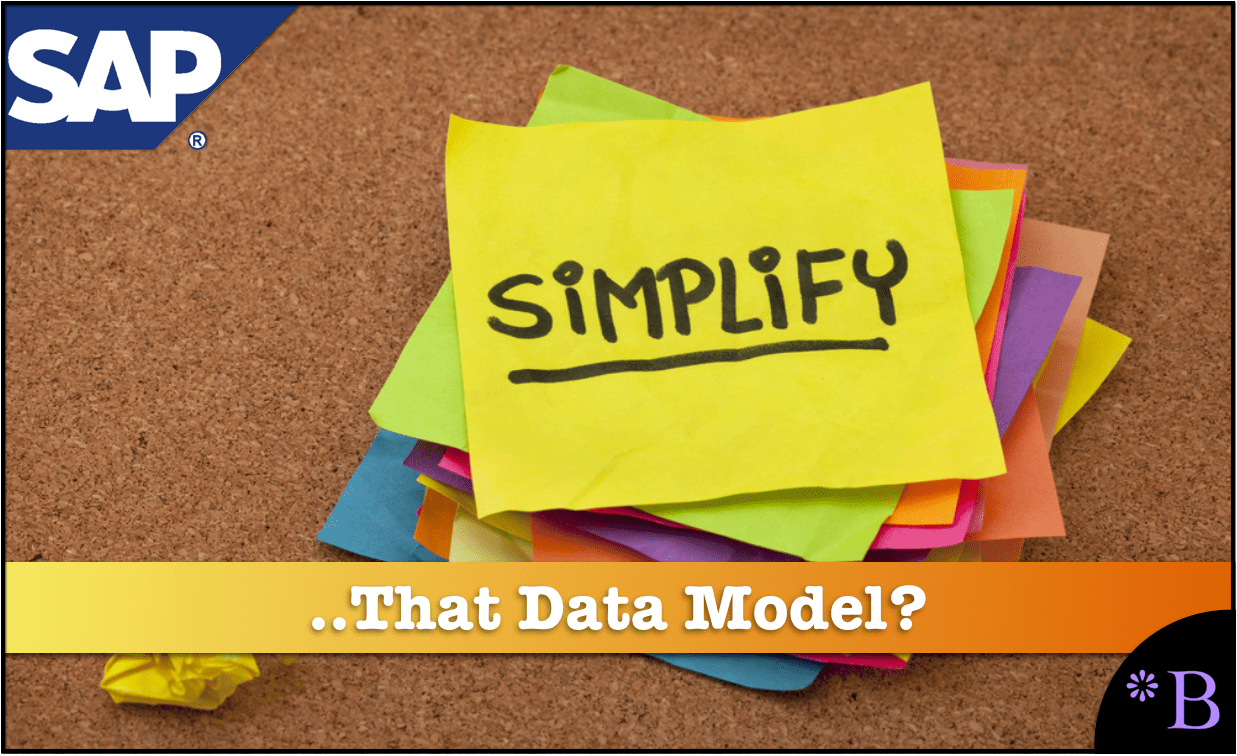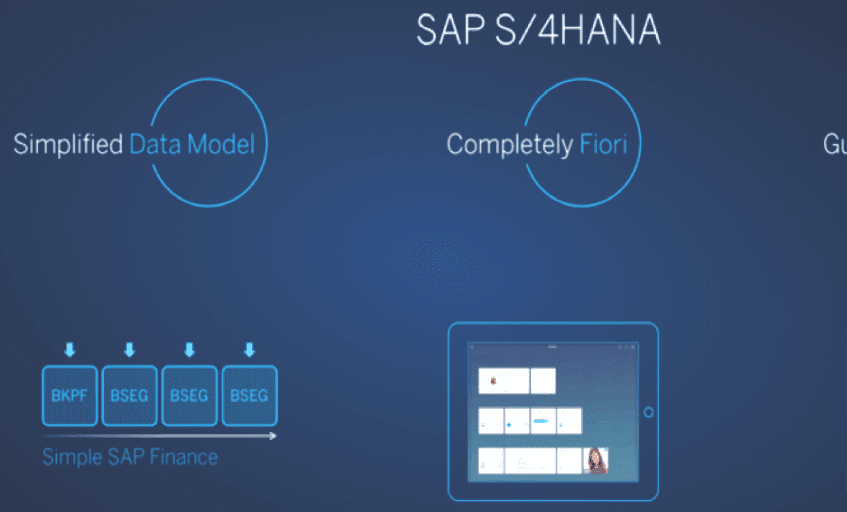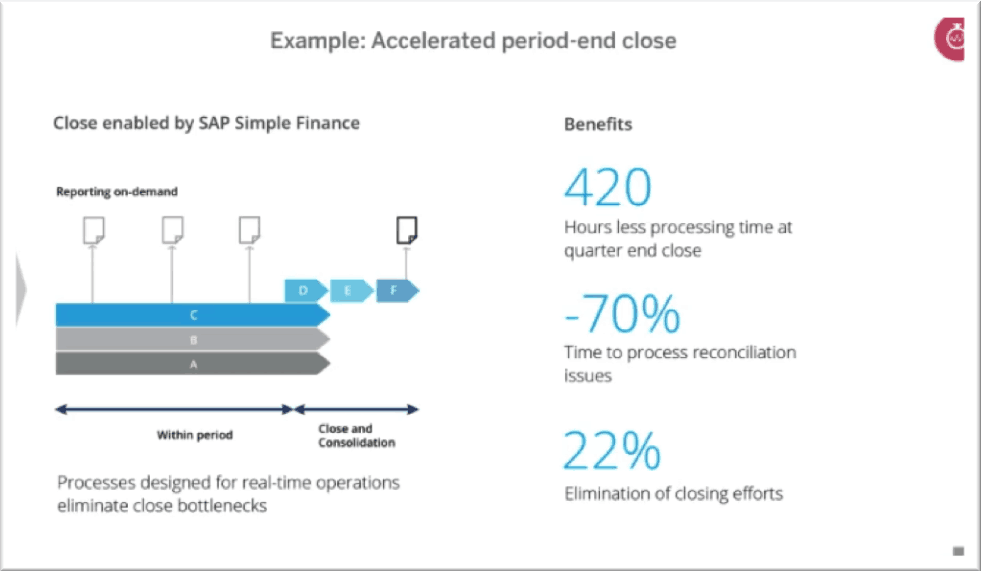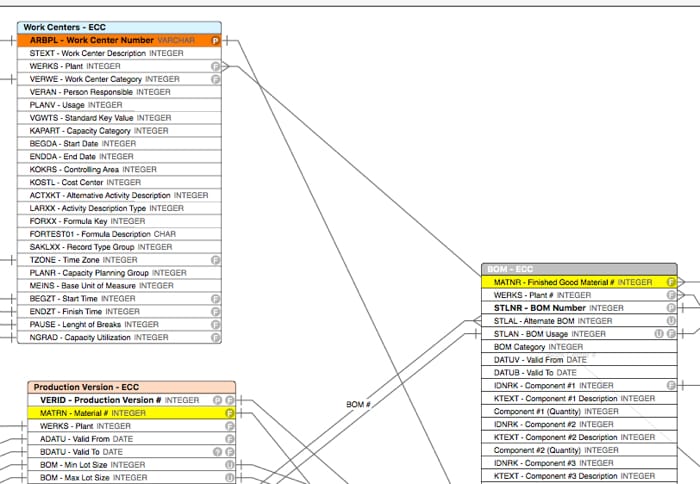Does SAP S/4HANA Actually Have a Simplified Data Model & Faster Financial Reconciliation?
Executive Summary
- SAP has proposed that HANA and S/4HANA has a simplified data model.
- We validated these claims, including different account silos, faster reconciliation, and understanding the columnar database’s performance.

Notice of Lack of Financial Bias: We have no financial ties to SAP or any other entity mentioned in this article.
- This is published by a research entity, not some lowbrow entity that is part of the SAP ecosystem.
- Second, no one paid for this article to be written, and it is not pretending to inform you while being rigged to sell you software or consulting services. Unlike nearly every other article you will find from Google on this topic, it has had no input from any company's marketing or sales department. As you are reading this article, consider how rare this is. The vast majority of information on the Internet on SAP is provided by SAP, which is filled with false claims and sleazy consulting companies and SAP consultants who will tell any lie for personal benefit. Furthermore, SAP pays off all IT analysts -- who have the same concern for accuracy as SAP. Not one of these entities will disclose their pro-SAP financial bias to their readers.
Introduction
SAP has consistently pointed to the benefits of S/4HANA’s simplified data model as part of its SAP “Run Simple” marketing program. SAP has proposed that its simplified data model reduces implementation complexity and improves database design in multiple ways. After listening to these assertions on many occasions and reading quite a bit of SAP marketing literature, things were not adding up. We began questioning this assertion and the overall SAP Run Simple program’s claims. You will learn whether S/4HANA has a simplified data model.
Our References for This Article
To see our references for this article and related Brightwork articles, visit this link.
Interpreting SAP Run Simple Related to S/4HANA and HANA
When watching an SAP or reading a presentation through documents related to S/4HANA and HANA, generally, the proposed benefits “come at you” very fast.
It takes some time to sit down and look at each of the proposals individually to determine whether they are accurate or likely to be true.
Importance of Verifying the Simplified Data Model for SAP Run Simple
Understanding the concept of SAP’s proposal regarding a simplified data model is essential. It is used as a foundation for building an argument for other benefits; one of the most important is that S/4HANA is more straightforward overall. However, I will use the proposed benefits of financial reconciliation in this article.
The SAP states clearly that S/4HANA has a simplified data model for SAP Run Simple.
Jens Kruger from SAP has a video on S/4HANA, and he states that.
“S/4HANA offers a simplified data model.”

And that…
“All data is available without reconciliation, leaving financial departments to strategic tasks instead of just doing administrative functions. How can this be done? This is based upon a simplified data model. The simplified data model enables insights into financials data. “
He then goes on to say:
“All of those silos required a reconciliation in order to get a consistent view on the data. And therefore getting instant insight into data across all silos is not possible. Therefore, the power of SAP HANA underneath the universal journal entry creates a single source of truth, and there is no reconciliation needed.”
“Under a traditional close, it is consists of a lot of steps. They must be performed in a batch fashion since they are just running too long. With the SAP HANA platform we are now able to reduce this.”
And Jen also provides specific speed improvements.

Here is where SAP declares the proposed speed improvements. This is interesting because I had never heard that reconciliation negatively impacted so many global FI/CO implementations, which Jens Kruger is proposing.
Different Accounting Silos?
Jens’s identification of Financial Accounting Documents, Controlling Documents, and Profitability Documents as separate silos is strange. These are all integrated transactions within the FI/CO module currently in ECC. However, his point seems that reconciliation times in ECC presently make them break into different silos.
This video from SAP also claims that financial reconciliation is much improved.
S/4HANA’s Data Model
Let us clarify what a data model is before we validate the claim regarding its simplification.
A data model is the set of tables and the relationship between tables used — in this case — for the application to call upon. I have included just a small part of the SAP ECC data model related to Work Centers, the Bill of Materials, and the Production Version.

A simplified data model would mean that the tables, relationships, and primary versus secondary or supporting tables are simplified. However, it can only be partially said to be true of HANA. Here is why:
- The Use of Columnar Tables
- Relationships Between the Tables
- Fewer Indices and Aggregation Tables
The Use of Columnar Tables
HANA uses columnar tables, meaning many tables are a single column. This, of course, significantly increases the number of necessary tables. Because the previous tables need to be emulated for people who need to see and work with the data, the data model is not simplified.
Relationships Between the Tables
SAP’s point is probably that they cleaned up the relationships. Having reviewed many previous SAP tables and modeled the tables in ERD diagrams, I can say that many of the tables and the relationships between the tables were indeed convoluted in their design.
When software development happens, the idea is that all the tables are laid out ahead of time. But the reality is that often, the tables are added more holistically, and much of ECC was written before more advanced data modeling tools were available.
Fewer Indices and Aggregation Tables
Fewer database speeding mechanisms, like aggregates and indices, are needed, but this is not the actual data model. SAP may be using shorthand here, and when they refer to the term “data model,” they mean all the tables used in the database. I think that could be a fair point. Columnar databases, indeed, tend to need fewer supporting tables. However, HANA still uses aggregates, although they call it something else. It is right on the SAP HANA website. Aggregates are beneficial because they are precomputed combinations that are constantly reused.
The bullet points above should be apparent because the “data model” simplification that SAP so breezily refers to is not definitive in any shape or form. With a columnar database, some areas become more straightforward, and others are more involved. Overall, there are also complexities involved with a new database, so I predict that HANA will be more complicated than a company’s previous database installation. That is the issue with new products; the more new, the more unpredictable outcomes.
I cover these risk interpretation topics in Rethinking Enterprise Software Risk: Controlling the Main Risk Factors on IT Projects. One of the issues I bring up in the book is that if the software vendor has too much influence over the consulting company, the outcome can be hazardous proposed projects.
SAP and SAP’s surrogates have pushed the idea that HANA simplifies an IT environment. For example, in an article on HANA, John Appleby (an SAP surrogate) made the following statement.
“Most organizations spend a substantial amount on BI projects, and with BW on HANA they will either spend less (fewer full time employees or consultants) or achieve more for the same, in a shorter elapsed time. Our benchmarking suggests that project build times are 20-30% less with BW on HANA, leading to an overall saving of 10-12% or more for capital projects.”
We analyzed SAP’s proposal that HANA’s data model is simplified in the article Does HANA Have a Simplified Data Model?
In this article, we will evaluate this simplification proposal from another dimension.
Lack of Simplification to HANA
The following quotation is from a reliable and verified source that works in databases (but prefers to remain anonymous).
“On the overall topic of “simplification” from the database layer into application tier point of view currently HANA looks like anything but simplification forcing significant re-mapping of functionality between different, new modules, the deployment of the Universal journal, the 400 page HANA simplification guide, etc etc.”
Of course, customers tend not to find out about these areas of HANA until after they have either engaged in a HANA POC or implemented HANA.
In essence SAP have partially switched from the need to develop and regression test over multiple AnyDB choices to sustain the PAM / Client NetWeaver platform choice, to forced client migration of functionality between modules and cloud (SCM is a good example roughly half the function lands in S/4HANA, roughly half in the Cloud based IBP functionality) with multiple version / functional interdependencies.
Also, HANA appliance building block sizes are not very granular.
This to me simply looks switching one set of challenges for another, it’s not really simplification.
Simplified Data Model = Faster Reconciliation as Part of SAP Run Simple?
Is it the simplified data model that speeds reconciliation and, therefore, creates a single version of the truth? As I just discussed, a columnar database uses fewer assisting or secondary tables. But it also makes many more tables, with many more relationships, and has to generate the views of the previous tables of ECC, as it is illogical to work with just a bunch of columnar tables.
If you go into ECC on HANA, you will see all the same tables you have seen before because HANA emulates them, so how much simpler this is depends upon your point of view.
Understanding the Performance of the Columnar Database
Secondly, a columnar database like HANA will underperform a standard row-based (aka relational database) in transaction processing, including year-end close (all other things being equal).
When HANA is proposed to be universally virtuous in performance in all situations, remember that a columnar database only outperforms relational databases for analytical applications. However, S/4HANA is intended to sit only on HANA (although I see this exclusivity changing in the future). But HANA uses much more expensive and higher-speed hardware, so the increase in speed in this apparent non-analytical application will come only from more costly and higher-speed hardware.
Therefore, the statement that HANA’s “simplified data model” will lead to faster reconciliation is invalid.
Why Faster Hardware is Actually What Will Lead to Faster Reconciliation
However, this faster settlement will be equally available to a company that would port its current ECC system to faster hardware if we consider it.
Multiple Versions of the Truth?
SAP is changing the previous story on ECC to make points for S/4HANA. I don’t think SAP would be talking about how slow its reconciliation and period closing are in ECC if they were not trying to sell S/4HANA (call me cynical). If this is all true about reconciliation latency, then the question is, do other software vendors face this issue?
To find out, I contacted two financial vendors, Intacct and FinancialForce, two accomplished vendors in financial applications, to determine if they have similar reconciliation problems. Neither of them uses an in-memory database. Neither of them seemed to have heard of the difficulties with reconciliation and period closing described by SAP. When I spoke to FinancialForce, they had the following to say about reconciliation and period closing in their system:
You need to do all the things to setup the year end, and we have an automated button that performs all of the reconciliation. The a button is hit and the journals are created for you. This is not even a batch job process — in that it may take 30 minutes to 2 hours, with 2 hours being on the very long side.
Therefore, what amounts to a quarterly or yearly process takes, in most cases, roughly 45 minutes. So, if we take SAP’s proposal, S/4HANA will save 420 hours on the quarterly close. If that is the number of hours saved, how many total hours are the present ECC systems taking exactly? That sounds terrible.
SAP does not adequately explain that there are things to check before reconciliation.
Reconciliation Speed Issues?
ECC’s hardware, not the data model of ECC versus S/4HANA, is attributed to reconciliation speed changes. Secondly, two financial vendors are unaware of the batch problems in their systems that SAP has attributed to ECC.
Here are some essential things to consider when interpreting the message of reconciliation and period closing, as described by SAP:
- It should be remembered quarterly closing is only a tiny portion of the activities performed within FI/CO.
- Finance does not require much computing power, and SAP is stretching here to find something to help sell S/4 Simple Finance.
Conclusion
The information provided by SAP on this topic is convoluted, and once broken down into its constituent pieces, it does not add up. Jens Kruger of SAP is commingling several different topics to make a case for S/4HANA Simple Finance, but the items he attributes to HANA are not related to what he calls out. This is part of the attempt to fit into the SAP Run Simple marketing program. However, SAP Run Simple has little to do with reality. SAP Run Simple is nothing more than a marketing construct.
There is also an exaggeration on the part of SAP regarding the impact of quarterly closes. This is not the first time I have seen this proposal from SAP. SAP also uses the example of long-run times for MRP to justify Simple Logistics. Why these issues have not been addressed in articles on S/4HANA is a concern. However, I suppose that allows me to provide outstanding value to my readers and clients. However, it raises many issues regarding either the knowledge level or the independence of many media outlets that carry stories and are supposed to analyze SAP. For software buyers, if you have a consulting company proposing to you that the SAP S/4HANA data model be simplified, that would bear an explanation on their part as to why that is. If they blindly agree with SAP on everything, they will be limited in how much they can help you.
Recommendation
I recommend that the time required for reconciliation and quarterly closes be benchmarked in the client’s current ECC system to determine whether this is an issue. Statements about the reconciliation and quarterly close time should not be looked at separately but checked against what other software vendors in the area have to say on the topic.
Curious about the reality of S/4HANA implementations? See our The S/4HANA Implementation Study for real story and details on actual S/4HANA implementations.